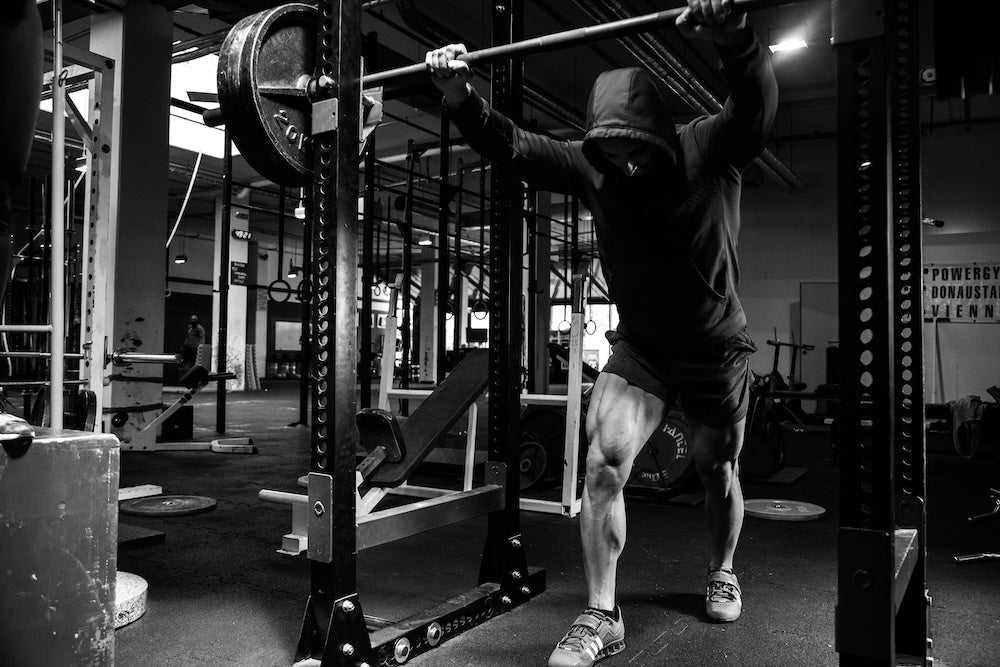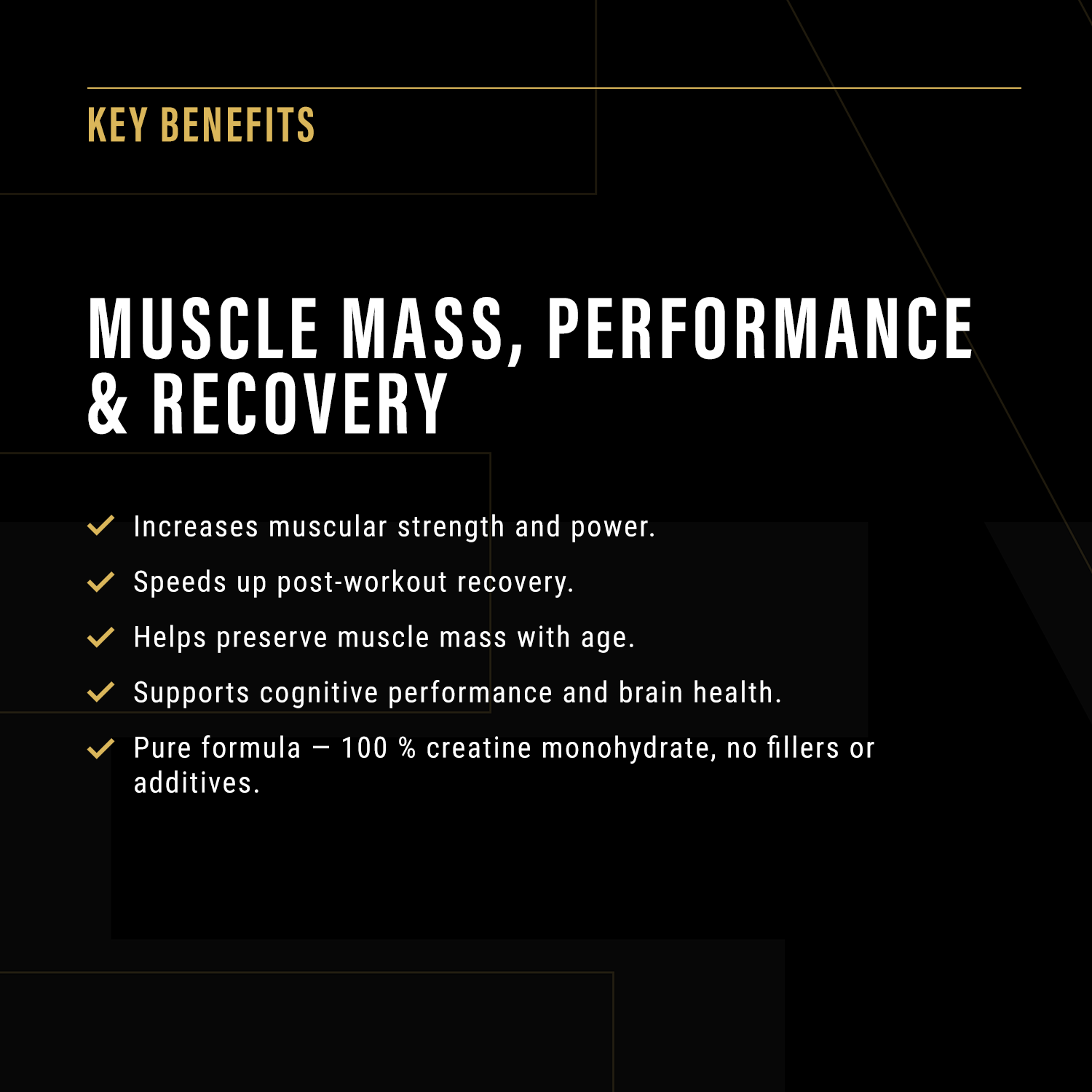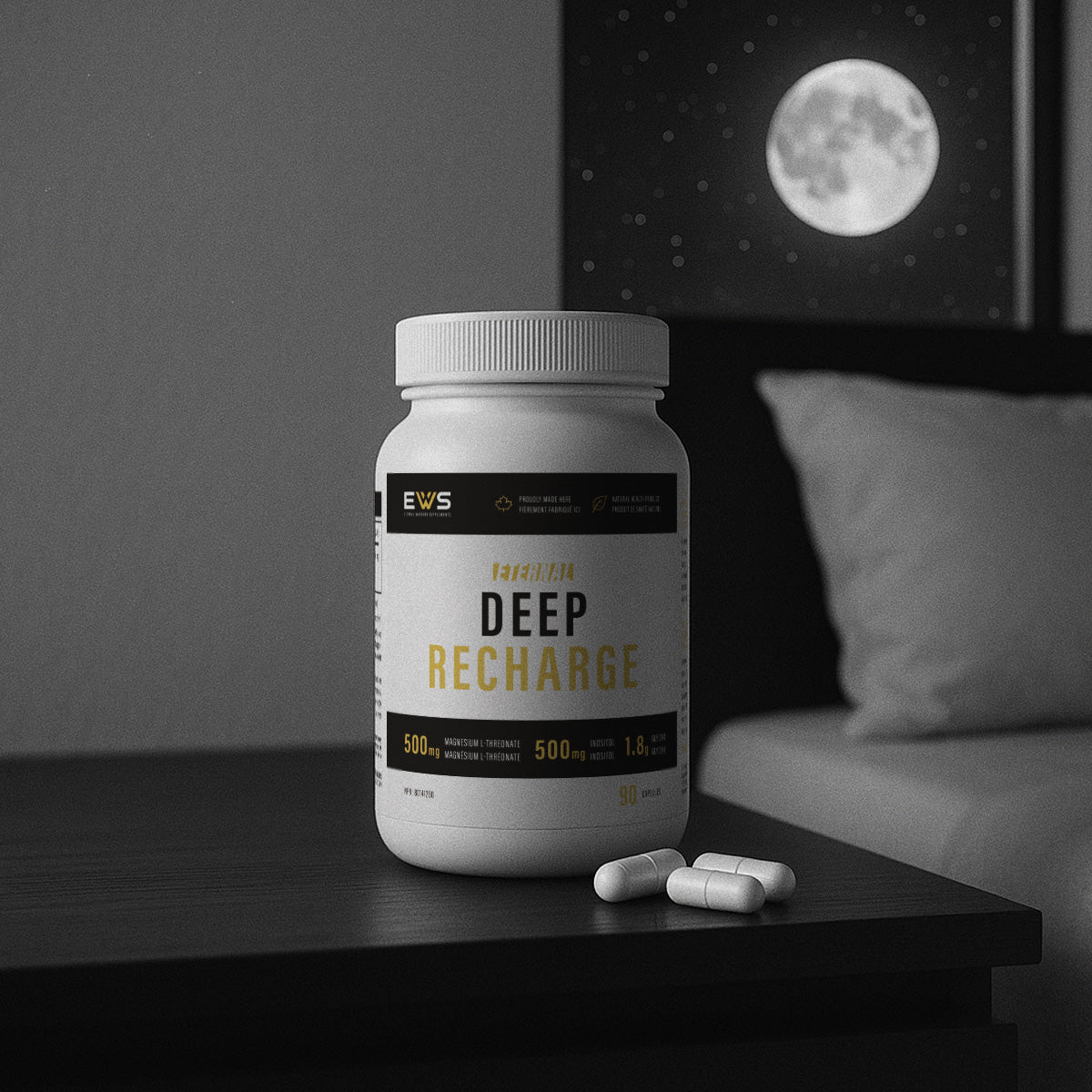By Christian Thibaudeau
Peter (not his real name) is a guy that lifts at the gym I train my clients in. He’s all about strength and, specifically, powerlifting. If there is one thing I must give him is that he trains with a vengeance, aggression and with a “don’t leave any prisoners” attitude.
Because of that, Peter is his own worst enemy.
Peter takes all of his work sets to the limit. Each last repetition is a grind, and you know there isn’t enough room for even one more pound on the bar. Heck, a few weeks ago I witnessed Peter doing a “deload session”. Which was 5 sets of 5 at 80% (!!!). Not surprisingly he wasn’t able to compete all his sets of 5.
In the mind of his coach, weight of 80% are a deload (compared to the 90%+ he was using prior). And it very might well be. But the problem is that by asking Peter to do sets of 5 reps with that 80%, you are turning deload sets into sets that are just as demanding as maxing out.
See, most strength-oriented lifters can do 5-6 reps with 80%. And since you accumulate fatigue from set to set, you soon get into the red.
By the second set, the last rep of each set turns into a de facto maximum effort. You create something like 3-4% of fatigue per rep when working with 80% weights.
During your 1st set...
Rep 1 feels like 80% (no fatigue)
Rep 2 feels like 84%
Rep 3 feels like 88%
Rep 4 feels like 92%
Rep 5 feels like 96%
Then you start your next set with some fatigue, so it can turn into...
During the 2nd set...
Rep 1 feels like 84%
Rep 2 feels like 88%
Rep 3 feels like 92%
Rep 4 feels like 96%
Rep 5 feels like 100%
You can only imagine what sets 3-5 looks like! As a matter of fact, he was unable to complete set no.3.
Not surprisingly, Peter said that he was completely drained and even felt like he had PTSD!
When I deload, I typically deload by effort level.
Effort level can be deffined by how close you get to failure or how many reps you have in reserve. Most will use an RPE (rate of perceived effort), which is a subjective measure, or RIR (reps in reserve, how many more reps you could have done on that set).
In the above example set no1. Would be an RPE of 9 /10 whereas set number 2 would be an RPE of 9.5 or 10.
The effort level is a much better indicator of how stressful/demanding a set is.
For example, a set of 1 rep with 90% is less draining and easier to recover from than a set of 8 reps with 75%, even if the weight is much heavier.
When deloading I recommend an effort level of around 6/10. This translates into keeping 3-4 SOLID reps in reserve.
For example, if with 80% you can do 6 reps to failure. Then during a deload you do 3 reps.
If you maintain effort level, you will not recover.
But I’m getting off-track!
In this article I want to teach you the progression model I am currently using with great success. Gaining strength rapidly, while never feeling fatigued, drained or achy.
WHEN BUILDING A HOUSE...
If you are trying to build a house, you’ll need many different tools. And each of these tools have its own purpose and are therefore used differently. You will not use a hammer to cut a plank of wood.
It’s the same thing with training.
When doing an exercise specifically for the purpose of getting stronger, you should not have the same approach as if you are using it to stimulate growth.
I would even say that big basic barbell lifts should not be trained according to the same rules as machine exercises or isolation movements.
When training for hypertrophy on machines or isolated exercises, proximity to failure is important. For maximum results you should push these exercises close to the limit.
But the same doesn’t hold true with training for strength on the big basic lifts; that will just get you drained, and you’ll hit a wall sooner than later. Research has found that training close to failure on heavy barbell exercises not only doesn’t work better, it's worse than leaving reps in reserve. And that is supported by real life results. Sure, there are some lifters who were able to get strong by pushing their heavy barbell lifts close to failure, but these are the exception, not the form.
With that out of the way, let’s look at some basic principles of heavy barbell training before we get into more specific applications.
PRINCIPLE #1 – KEEP PLENTY IN THE TANK, MOST OF THE TIME
When doing your heavy barbell work you should leave around 3 solid reps in the tank. This does several things.
1. It allows you to do more sets and overall volume. Which is helpful to improve technique and neurological factors like intra and intermuscular coordination.
2. You can train each lift more frequently (e.g. olympic lifters and East European powerlifters do the competition lifts 3-5 days a week). Which also help develops neurological factors.
3. There is less technical degradation, both reducing the risk of injuries and allowing you to engrain proper technique rather than compensations.
4. It is less draining on the nervous system
Let’s look at the following table.
|
Maximal versus recommended reps for strength work at a given percentage of maximum |
|||
|
% of max |
Theoretical max reps |
Bottom of range |
Maximum reps |
|
75% |
10 |
5 |
7 |
|
80% |
7 |
3 |
4 |
|
85% |
5 |
2 |
3 |
|
90% |
3 |
1 |
2 |
|
95% |
2 |
1 |
1 |
|
100% |
1 |
1 |
1 |
While there are individual differences due to muscle fiber dominance (those with more fast-twitch fibers can do less reps at a given weight) and training background (if you trained mostly on low reps you’ll do less reps at a given percentage than someone who trained with moderate or high reps), this is pretty accurate for at least 75% of the population.
PRINCIPLE #2 – FOR BUILDING STRENGTH MOST OF YOUR WORK SHOULD BE BETWEEN 75-85%
When the weight on the bar represents 80% of the maximum weight you can lift at the beginning of each repetition, the motor-units recruitment is maximal. The more work you can do in that zone without creating excessive fatigue, the more your strength potential increase.
Remember that you are causing 3-4% fatigue on each rep when training with those kinds of weights. And what determines motor-units recruitment is not the load itself, but how important than load is compared to how much you can lift.
On the second rep of a set, you are 3-4% weaker than on the first rep (due to fatigue). So, if you have 75% on the bar, that second rep represents 79% of the max you can lift on that rep.
Also, in the 75-85% range, you can still do enough volume to stimulate muscle growth, almost as well as traditional hypertrophy training, on top of developing the neurological factors.
Compare that to weights in the 90-100% range, with which you cannot do as much volume and that will almost exclusively develop neurological factors.
I often say that 75-85% builds strength, 90-100% teach you to display your strength.
By the way, that training zone is well supported by how most Olympic lifters and a lot of East European powerlifters train.
PRINCIPLE #3 – GIVE YOUR BODY A BREAK BEFORE IT FORCES YOU TO
Some call it a deload, or strategic deconditioning, or peaking. I personally prefer the term “reloading”. But it all means the same thing: reducing the training stress in preparation for another “push”.
The three biggest problems with “deloading” are:
1. Not truly deloading. Refer to Peter’s example who did lower the weights but kept pushing to his limits.
2. Waiting for the crash. This is the most common won. People will train until they either hit a wall and stagnate or feel drained and fatigued. When you do that, the time required to get back to a state where you can progress is very long, much longer than the typical 1-week deload that people use.
3. Not long enough. People will deload for a week then go right back into pushing to the limits. After a deload you should gradually increase training stress. Not go from an RPE of 5 to an RPE of 9-10 right off the bat.
Regarding that last point, it can look like this

As you can see, after the deload you gradually ramp back up, not hit your max right off the bat.
Understand that this graph is for illustration purposes; the length of the ramp ups might very be longer than shown or get shorter. The point is that you should back-off (reload) before you hit a wall then then gradually work your way back up.
PRINCIPLE #4 – NOT ALL WORKOUTS ARE MEANT TO BE HARD
I want to start this section by saying that I’m talking about the work done on the heavy barbell lifts. If you are using machine or isolated exercises as assistance, you can (and probably) should go hard (high effort level) on these. This will be illustrated in the programing section.
One of the most popular strength training philosophies was the heavy – light – medium approach. This was used by pioneer systems like “The Strongest Shall Survive” by Bill Starr and “Bigger, Faster, Stronger”.
It consisted of having 3 whole-body workouts, based on heavy barbell lifts. One of the three workouts was “heavy” (for example sets of 5 reps at 80-85%), the next one was “light” (for example sets of 5 at 60-65%) and the last one was moderate (sets of 5 at 70-75%).
I like the concept, in that by not pushing hard on every workout you greatly reduce fatigue, allowing you to perform better on the heavy workout.
However, I do not like going below 75-80% when training for strength, in that sense, the “light” workout is not a optimal.
I prefer to keep the same weights for all three workouts, but modulate other variables like sets and reps/effort level.
Instead of heavy – light – medium, I prefer to use a Stimulating – Stabilizing – Recovery approach.
Stimulating: This is where you build up the most strength (and size). We do this by doing a high number of sets (I like to use 5) at the selected weight (same for every ser). On the “stimulating” days, you have no assistance exercises. You do your 3-4 big barbell lifts for, let’s say 5 sets of 5 reps at 75-80%.
Stabilizing: On this day you use the same weight and reps (75-80% for sets of 5) as on the stimulating day, but you do less sets (e.g. 2-3 instead of 5). You can also add 2 assistance exercises to your workout.
Recovery: You still use the same weight as the other 2 types of workouts. But now you reduce the sets and reps per set, or the effort level (e.g. 2 sets of 3 reps instead of 5 at 75-80%). And you can do 2-4 assistance exercises.
A training week would be like this:
Monday – Stimulating
Tuesday – OFF
Wednesday – Stabilizing
Thursday – OFF
Friday – Recovery
Saturday – OFF
Sunday – OFF
(I’ll have a higher frequency option later in this article).
The next week you’d start over with 5lbs more on your lifts. And you keep doing that for a few weeks.
PRINCIPLE #5 – FREQUENCY IS KING
If there was a competition with a prize of 10 million dollars to the person who can increase his bench press the most in a month, how many times a week would you bench? Most would instinctively say “every day”, or at the very least 3 times a week.
And this is a case where instincts are correct.
There is a good reason why olympic lifters squat, snatch and clean & jerk 4-6 days a week (sometimes twice a day) and also why this high frequency is popular with East European powerlifters: frequency works!
Producing a high level of force on heavy barbell lifts is a motor-skill. And the key to successfully improve a motor-skill is the frequency, rather than the quantity, of practice.
If you want to improve your golf swing and are allowed to hit 700 balls per week...
,,, hitting 100 balls 7 days a week will be more effective than hitting 700 balls once a week. Heck, hitting 50 balls twice a day, 7 days a week. Would be even more effective.
It’s the same thing with the barbell lifts: if you are allowed 15 sets...
... Doing 5 sets, 3 days a week is better than doing 15 sets once a week...
... Doing 3 sets, 5 days a week is better than doing 5 sets 3 times per week
... Doing 2 sets, 7 days a week is better than doing 3 sets, 5 days a week...
Of course, that only holds true if you can recover. This is why principles 1 and 2 are so important. You can’t have a super high frequency if you push to the limit in your workouts.
PRINCIPLE #6 – DON'T DO A STRENGTH WORKOUT WHEN YOU HAVE ACCUMULATED FATIGUE
In a sense, powerlifting and weightlifting (or strength training in general) have more in common with sprinting than bodybuilding.
Sure, powerlifting/weightlifting use similar tool to bodybuilding. However, the proper training methodology for the strength sports is more philosophically like sprinting.
The first thing when trying to run faster is to never do a sprinting workout when either your nervous system (central) or muscles (peripheral) are fatigued. In fact, you want to do a sprinting workout while being as fresh as possible.
It’s the same thing with powerlifting/weightlifting. The fresher you are the more motor-units you recruit, the faster they fire and the more coordinated they are.
In bodybuilding (or for hypertrophy in general) proximity to failure, not necessarily hitting failure but getting close to it, leads to better results.
In powerlifting/weightlifting (or for strength in general) it’s not the case. In fact, it seems that proximity to failure is a negative when training for strength, by causing too much central fatigue (reference).
In that sense, it’s the same thing as with sprinting: you wouldn’t sprint to failure, would you?
Also, despite the constant online battle between the high-volume and low-volume camp, a higher volume of work does seem to increase hypertrophy (with some individual differences in response to volume).
Strength training doesn’t seem to be volume-dependent as much as hypertrophy.
In sprinting, the modern methodology (started by Charlie Francis, Ben Johnson’s coach), is that of a low volume of work. I remember when I did sprint training with a real coach and sprinters, we would do something like 4-6 total sprints of 30-60m per workout (sometimes with 7 minutes between runs).
Sprinting, just like powerlifting/weightlifting is not volume-dependent.
The moral of the story is that if you are training for strength, always do the workouts while being as fresh as possible.
This can mean taking a day off prior to each strength workout (or having an easy workout between two harder sessions), or reducing the variables that cause fatigue (volume, proximity to failure, short rest periods, high number of exercises, etc.).
For example, one of my client does squat, bench, deadlift, military press and Pendlay row 4 days a week (sometimes 5). But it’s for 2 sets of 3-5 reps with 3+ reps in reserve and with 3 minutes between sets.
In the past three months his squat went from 265 to 375lbs (likely more because we did not test it recently), his bench from 245 to 295 and his deadlift from 365 to 450-465 (don’t know exactly, he did 425 x 3 at an RPE of 8 today), his military press from 135 to 165.
I know that these improvements do seem hard to believe (especially the squat and deadlift) but it’s in part because he was not training the squat and deadlift hard prior to starting strength-focused training. But still...
During those 3 months I’d say that he had, at the most, 5-7 hard reps. And these were due to life events that I didn’t factor in.
PRINCIPLE #7 – PRACTICE THE LIFTS YOU WANT TO BE STRONG AT
I’m going to say it right off the bat: I’m not a big fan of Westside’s approach of changing their main lift (max effort method) weekly. Yes, they produced some strong lifters but in the world of strength they are the exception rather than the rule.
From powerlifters to weightlifters and strength legends (Paul Anderson, Doug Hepburn, Bob Peoples, George Hackenschmidt, etc.) there are a lot more elite lifters who based their training on the main lifts year-round (or almost) than those who change lift every week.
The fact is that the strength lifts (squat, bench, deadlift, military press, snatch, clean & jerk, etc.) are motor skills just like any other sporting movement. And, as I previously mentioned, when it comes to motor-learning, frequency of practice is king.
Then why has Westside produced great lifters, despite a suboptimal approach?
I can see a few reasons.
1. The vast majority of Westside lifters were/are lifting in equipped/geared. And I’m not saying that geared lifting requires no technical efficiency, but I’ll argue that the squat suit/briefs, deadlifting suits, mega knee-wraps and bench shirts make lifting big weights less technique-dependent.
2.
While Westside has produced a few lifters from scratch, most of their elite lifters came to them already at a high level and, more importantly, with very efficient technique. So, they could get away with less practice.
3.
I have not seen the numbers, but it sure does seem that Westside has a much greater proportion of serious lifting injuries than Russian (for example) lifters and olympic lifters. The combination of maxing out weekly, on movements you rarely practice isn’t the best idea to reduce the risk of injuries.
Just because some lifters got great results from something, doesn’t mean that it’s a good approach for most. Take the old Bulgarian weightlifting system in which they maxed out every day, sometimes 2-3 times a day on front squats, snatch and clean & jerk. How many people can do that and survive, let alone thrive? 2%? 3%? Heck the whole Bulgarian system was designed more as a natural selection process. Maybe 1000 lifters got into the program and only 10-15 would survive it, but these where the people with the best genetics and psychological profile to be elite lifters. They would end up being top in the world... but nobody talks about the thousands who lie broken down somewhere down the road.
When selecting the training principles, you abide to, look for clues. But the best clues are things done by the vast majority if successful lifters, not the exception.
Conclusion
Strength training is as much about strategy as it is about effort. Many lifters, like Peter, fall into the trap of believing that pushing every set to the limit is the fastest road to progress. In reality, this approach often leads to premature fatigue, stalled progress, or even injury. The principles outlined here emphasize that building lasting strength requires patience, precision, and the discipline to stop well before failure. By managing effort levels, training within the 75–85% range, practicing the lifts frequently, and respecting recovery, you create an environment where strength can flourish without breaking the body down.
Ultimately, true progress comes not from reckless intensity, but from consistent, intelligent training. Think of strength as a skill—one that grows sharper with frequent practice, moderate loads, and proper recovery. Follow these principles, and you won’t just display strength on occasion—you’ll build it for the long run.





























